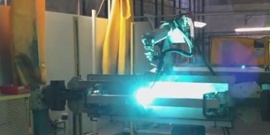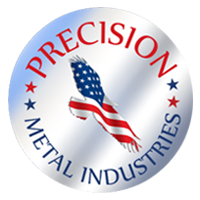The sheet metal production process powers American industry—nearly every type of manufacturer relies, in some way, on parts, specialty components, structures, or equipment that is a direct result of sheet metal fabrication. From large industrial structures and supports to the most sensitive digital assemblies, sheet metal plays a key role.
What is the sheet metal working process?
Sheet metal fabrication is made up of nearly as many individual processes and tools as the applications it serves. Their common goal, from laser cutting to press brake forming, is to convert a sheet of metallic material into use for a specific project. This can be accomplished with a number of methods.
Bending and Forming

The bending process in sheet metal utilizes unique tools, such as press brakes, to create U bends, V bends, and custom forms from flat metal sheets. Folding, machining, and stamping are all common ways to bend or form metal. Rotary and elastomer bending can create new shapes even with finished and delicate surfaces, while punching is an example of precision fabrication with the use of a die.
Cutting
The sheet metal cutting process can involve tools of all kinds, from basic to advanced. Custom cutting of specialty alloys, precious metals, and particularly hard materials often requires the use of laser cutting. This process allows for increased accuracy and precision when cutting product, as well as increased efficiency as computer aided programs ensure that the most efficient patterns are used.
Joining
Often, a part cannot be created from a single, flat sheet of metal — some form of welding process or assembly must bring two or more individual parts together. Riveting, adhesives, brazing, and welding are all different ways to create a single, bound metallic component.
Finishing
Once a sheet of metal has been transformed into a cut, formed, bent, or otherwise complete piece, it can be finished and protected with paint, powder coatings, silk screening, and other custom surface treatments. Some of these automated finishing treatments are designed to give the metal unique properties, such as additional strength, conductivity, or resistance to corrosion or particular chemicals.
Finishing
Once a sheet of metal has been transformed into a cut, formed, bent, or otherwise complete piece, it can be finished and protected with paint, powder coatings, silk screening, and other custom surface treatments. Some of these automated finishing treatments are designed to give the metal unique properties, such as additional strength, conductivity, or resistance to corrosion or particular chemicals.
Material Selection
Some materials are easier to process than others, making material choice an important step in any sheet metal fabrication process. Aside from getting the best final cost and performance fit, making a careful, well-researched material choice can save significant money, time, and energy on a project.
Material choice can also help determine the best manufacturer for your project. Many manufacturers specialize in particular materials, or pride themselves on offering a full array of services in one facility. Sheet metal processes such as precision machining, precision forming, and laser cutting for extremely tight tolerances are just some of the unique services available from specialty manufacturers.
For more information on sheet metal fabrication processes or the benefits of particular processes or materials, contact the team at PMI today.




